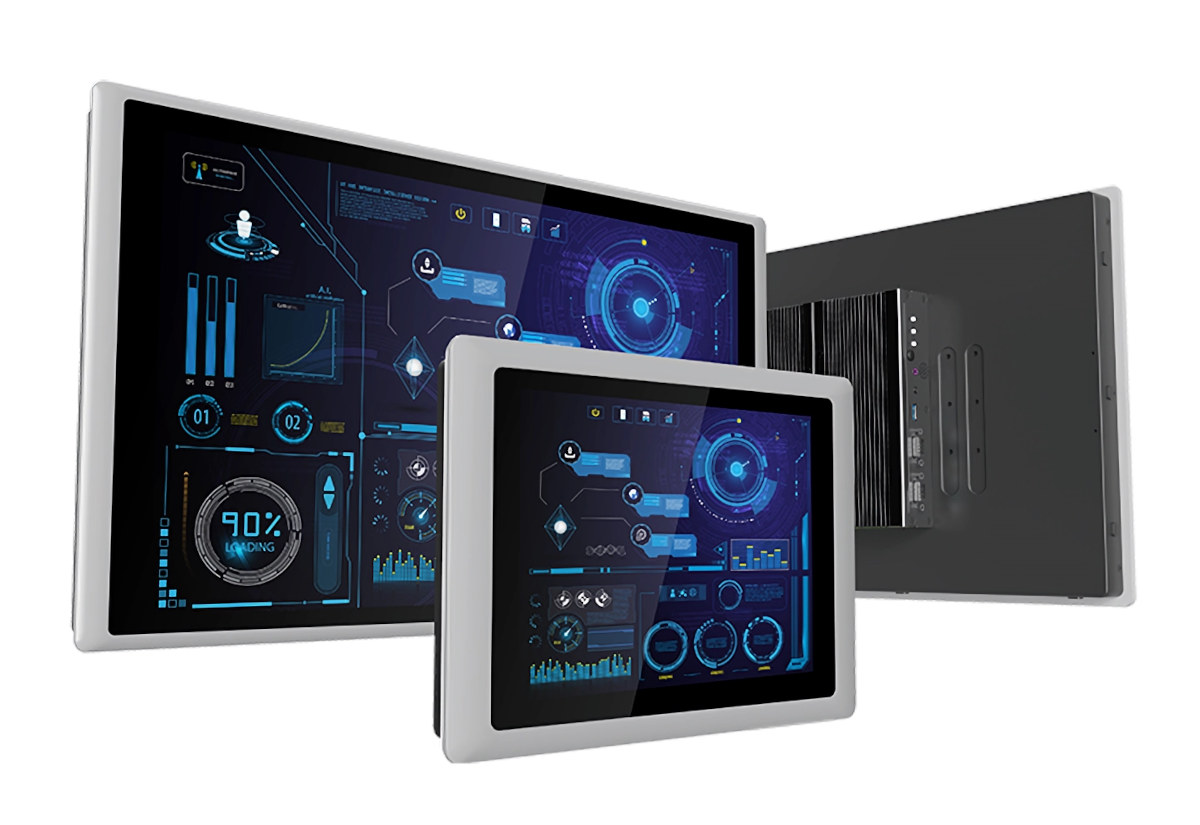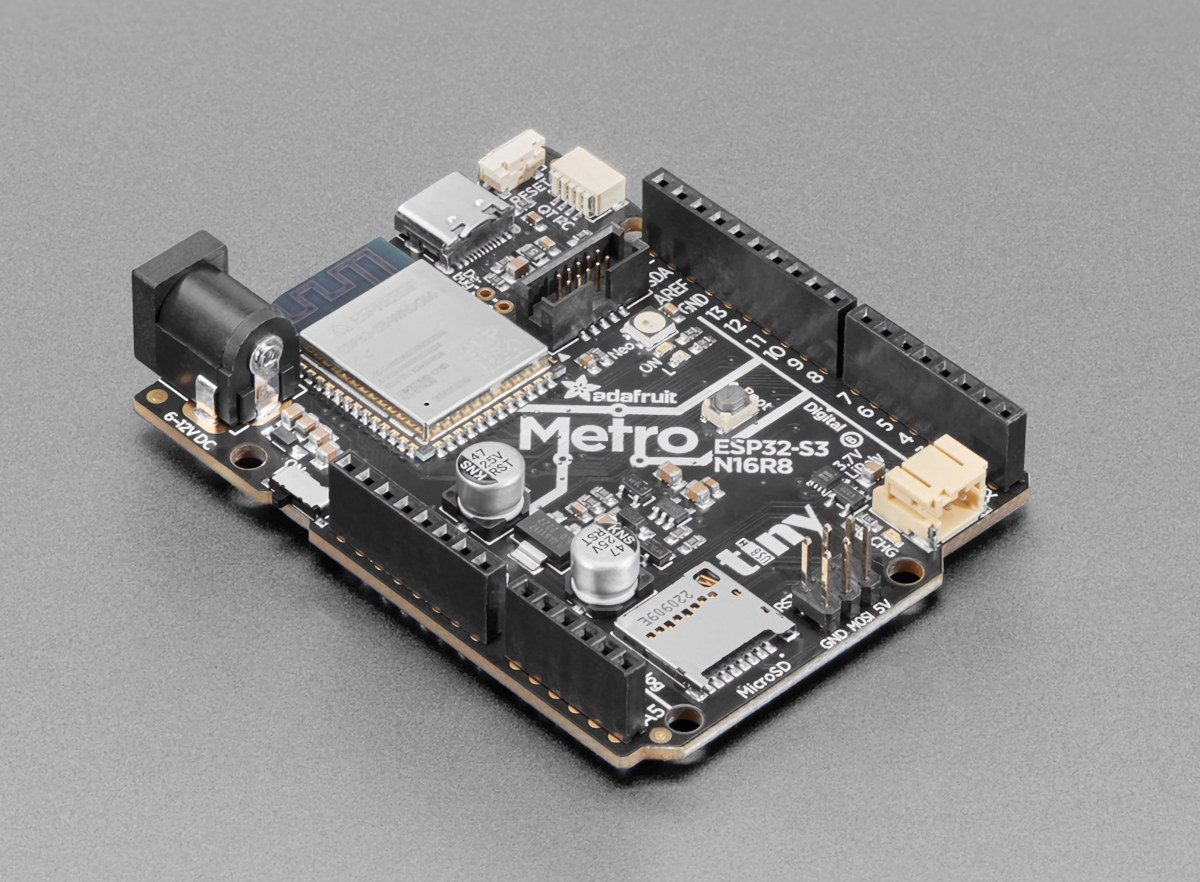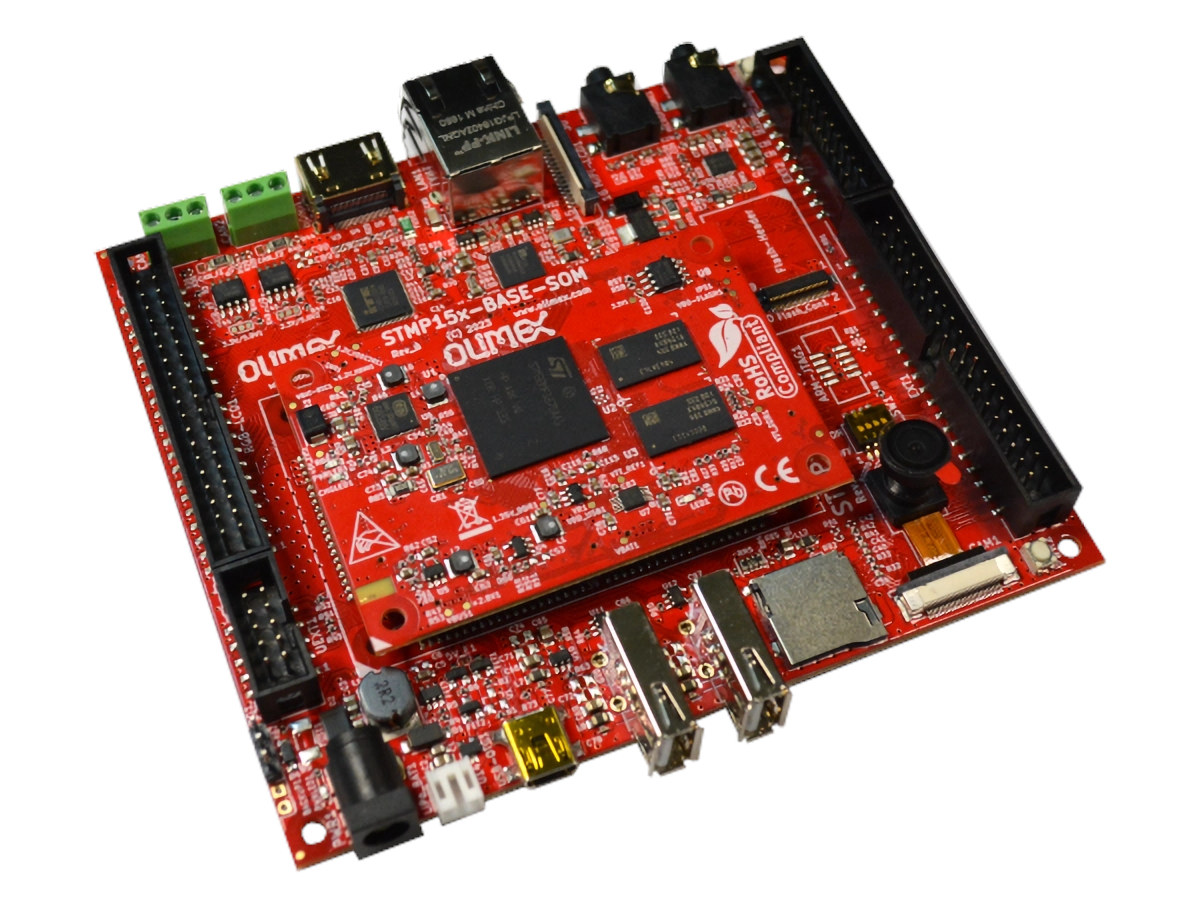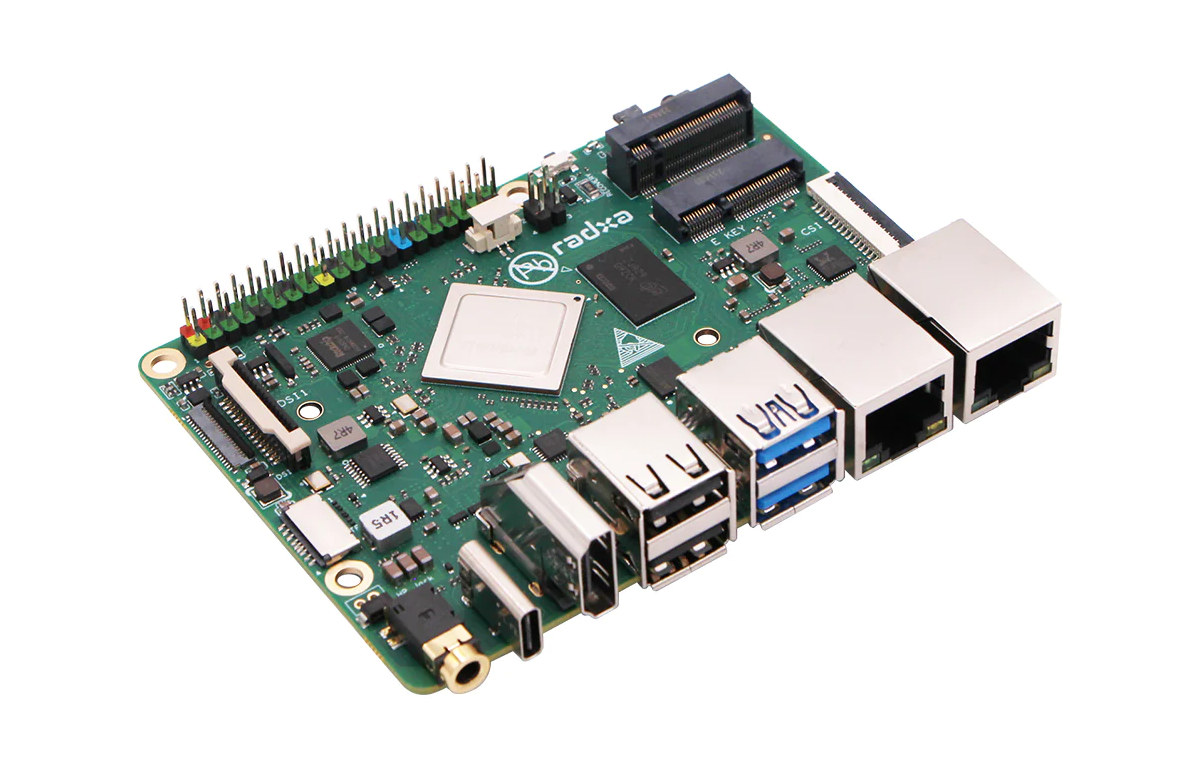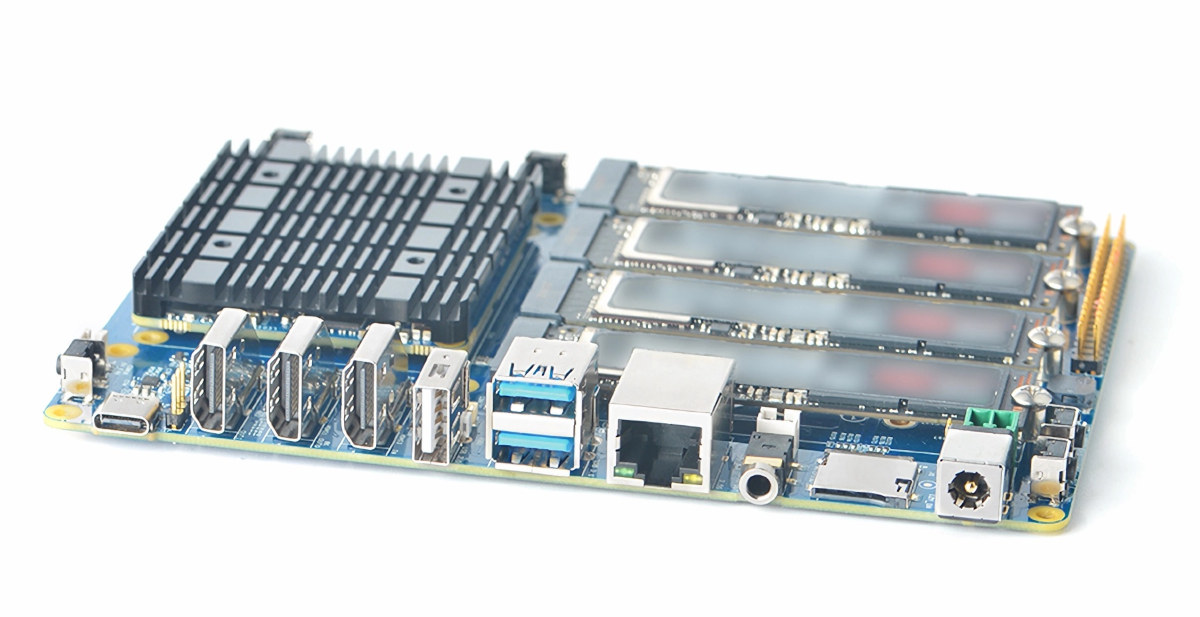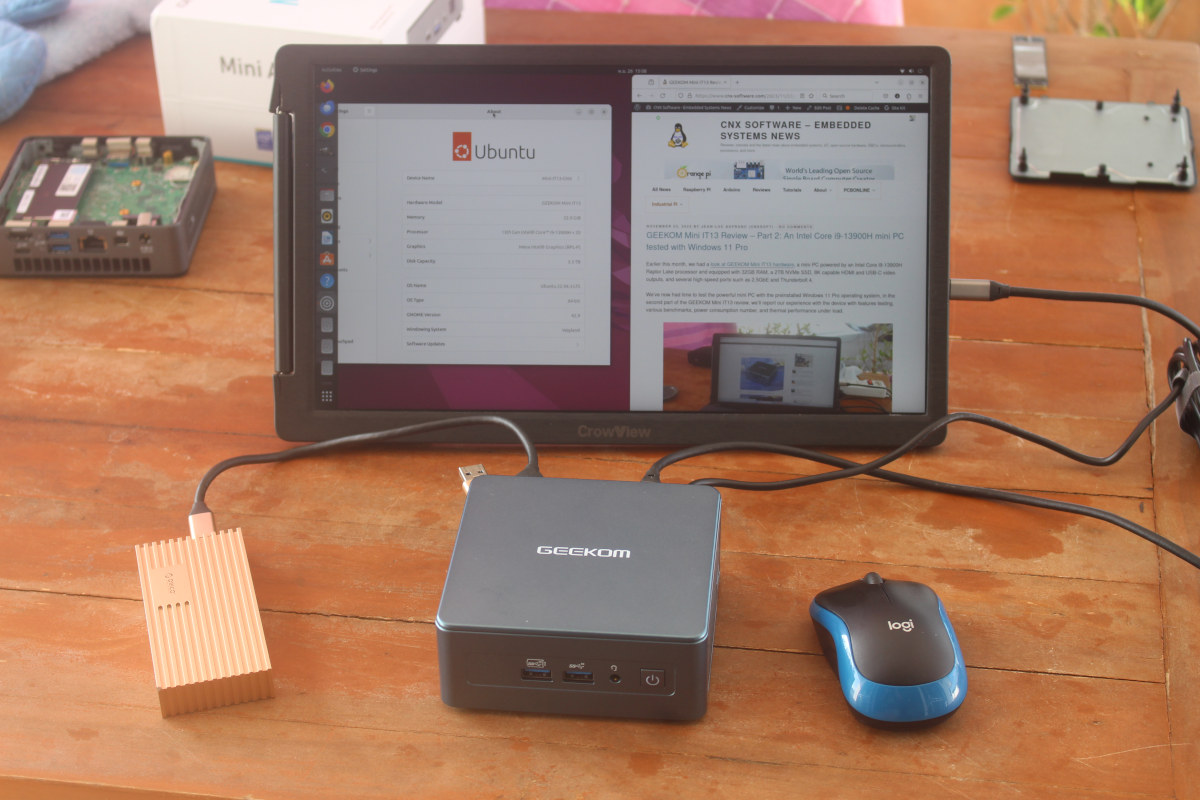Cincoze P2202 is an Intel Alder Lake-P embedded computer based on the Core i3-1215UE or Core i5-1245UE processor and designed for industrial, sunlight readable, or open-frame panel PCs from the company with sizes ranging from 12.1-inch to 24-inch. The P2202 supports up to 64GB DDR5 memory and two 2.5-inch SATA drives, and the system also offers four display interfaces including the company’s CDS (Convertible Display System) interface, two gigabit Ethernet ports, optional WiFi and 4G LTE/5G connectivity, multiple USB ports, four serial RS232/RS422/RS485 ports, digital I/Os, and various M.2, mPCIe, and PCIe sockets and slots for expansion. Cincoze P2202 specifications: Intel Alder Lake-P U-series SoC (one or the other) Intel Core i3-1215UE hexa-core processor up to 4.40 GHz with Intel UHD Graphics; TDP: 15W Intel Core i5-1245UE deca-core processor up to 4.40 GHz with Intel Iris Xe Graphics; TDP 15W System Memory – 2x DDR5 4800MHz SO-DIMM sockets for up […]
myAGV 2023 four-wheel mobile robot ships with Raspberry Pi 4 or Jetson Nano
Elephant Robotics myAGV 2023 is a 4-wheel mobile robot available with either Raspberry Pi 4 Model B SBC or NVIDIA Jetson Nano B01 developer kit, and it supports five different types of robotic arms to cater to various use cases. Compared to the previous generation myAGV robot, the 2023 model is fitted with high-performance planetary brushless DC motors, supports vacuum placement control, can take a backup battery, handles large payloads up to 5 kg, and integrates customizable LED lighting at the rear. myAGV 2023 specifications: Control board Pi model – Raspberry Pi 4B with 2GB RAM Jetson Nano model – NVIDIA Jetson Nano B01 with 4GB RAM Wheels – 4x Mecanuum wheels Motor – Planetary brushless DC motor Maximum linear speed – 0.9m/s Maximum Payload – 5 kg Video Output Pi model – 2x micro HDMI ports Jetson Nano model – HDMI and DisplayPort video outputs Camera Pi model – […]
Adafruit Metro ESP32-S3 WiFi and Bluetooth IoT board comes in Arduino UNO form factor
Adafruit Metro ESP32-S3 is an IoT development board with ESP32-S3 WiFi and Bluetooth wireless SoC, 8 MB PSRAM, and 16 MB Flash that follows Arduino UNO – or Adafruit Metro – form factor. The board also comes with two STEMMA QT I2C connectors for further expansion, comes with a microSD card socket for storage, a JTAG header for advanced debugging, and supports various power options with 6-12V DC via a DC jack, 5V DC via a USB-C port, and a 2-pin connector for a LiPo battery plus the board integrates charging and battery monitoring chip. Adafruit Metro ESP32-S3 specifications: Wireless module ESP32-S3-WROOM-1 MCU – ESP32-S3 dual-core LX7 microprocessor @ up to 240 MHz with Vector extension for machine learning Memory – 8MB PSRAM Storage – 16MB SPI flash Connectivity – WiFi 4 and Bluetooth 5 with LE/Mesh PCB antenna Certifications – FCC/CE certification Storage – MicroSD card slot USB – 1x […]
Olimex launches STMicro STM32MP157 SoM and open-source hardware EVB
Olimex has just launched the STMP157-BASE-SOM-EXT system-on-module (SoM) powered by an STMicro STM32MP157 dual-core Cortex-A7 microprocessor along with the open-source hardware STMP157-BASE-SOM-EVB evaluation board designed in KiCAD. The CPU module comes with 1GB RAM, an EEPROM for configuration, and power management circuitry, and the carrier board exposes all features of the microprocessor with HDMI video output, LCD display interfaces, a 2MP camera, gigabit Ethernet, USB ports, CAN bus terminal block, audio jacks, several GPIO headers, and more. STMP157-BASE-SOM-EXT System-on-Module specifications: Microprocessor – STMicro STM32MP157DAA1 dual-core Cortex-A7 processor @ 800 MHz with Arm Cortex-M4 real-time core @ 209 MHz, Vivante 3D GPU with OpenGL ES 2.0 support System Memory – 1GB DDR3 Storage – Linux configuration EEPROM Host interface – 6x 40-pin board-to-board connect with 1.27mm pitch for I/Os Misc – User LED, 24 MHz oscillator Power Management – AXP209 PMIC, LDO, DCDC power management Dimensions – 72 x 48 mm […]
Radxa ROCK 3B Rockchip RK3568 SBC combines Pico-ITX and Raspberry Pi form factors
Radxa ROCK 3 Model B, or ROCK 3B for shorts, is a “PI-CO ITX” SBC powered by a Rockchip RK3568 SoC that combines the benefits of Pico-ITX and Raspberry Pi form factors in the sense that the 100x72mm board features all main ports on the rear side and supports expansion through a 40-pin Raspberry Pi-compatible GPIO header and several M.2 sockets for storage and wireless modules. The ROCK 3B is the younger, but bigger brother of the ROCK 3A business card-sized SBC introduced in 2021, still with an RK3568 CPU and up to 8GB LPDDR4, but the board features two gigabit Ethernet ports, an M.2 B Key socket for 4G LTE/5G cellular modules, an M.2 PCIe 3.0 x1 socket for an M.2 2280 SSD not necessitating an expansion board, besides the M.2 Key-E socket for WiFi 6. ROCK 3B specifications: SoC – Rockchip RK3568(J) CPU – Quad-core Cortex A55 processor […]
FriendlyELEC CM3588 NAS Kit comes with four M.2 Key-M 2280 PCIe Gen 3 x1 sockets
FriendlyELEC CM3588 NAS Kit is a new Rockchip RK3588 board with four M.2 Key-M sockets each with a PCIe Gen 3 x1 interface and designed to take 2280 NVMe SSDs or other M.2 PCIe modules. Equipped with the CM3588 Core system-on-module, the feature-rich CM3588 NAS SDK board also comes with a 2.5GbE RJ45 connector, two HDMI 2.1 video outputs, one HDMI 2.0 video input, MIPI DSI and CSI connectors, several USB 3.0/3.1 ports, and a 40-pin GPIO header for expansion. FriendlyELEC CM3588 NAS Kit specifications: System-on-Module – CM3588 Core board SoC – Rockchip RK3588 CPU – 4x Cortex‑A76 cores @ up to 2.4 GHz, 4x Cortex‑A55 core @ 1.8 GHz GPU – Arm Mali-G610 MP4 “Odin” GPU Video decoder – 8Kp60 H.265, VP9, AVS2, 8Kp30 H.264 AVC/MVC, 4Kp60 AV1, 1080p60 MPEG-2/-1, VC-1, VP8 Video encoder – 8Kp30 H.265/H.264 video encoder AI accelerator – 6 TOPS NPU System Memory – 4GB, […]
GEEKOM Mini IT13 review – Part 3: Ubuntu 22.04 tested on an Intel Core i9-13900H mini PC
We published the review of the Core i9-13900H powered GEEKOM Mini IT13 mini PC in Windows 11 Pro earlier this week and have now installed Ubuntu 22.04 and tested the machine with the Linux-based operating system in detail with benchmarks, features testing, networking and storage performance tests, power consumption, and thermal performance which we will report in this third and final part of the review. Installing Ubuntu 22.04 on GEEKOM Mini IT13 I shrank the Windows partition by about 500 MB in Disk Management in Windows 11 (Disk 1) in order to install Ubuntu 22.04.3 in dual boot configuration. The installation went smoothly using WiFi 6 to retrieve newer files and I could log in to the Ubuntu 22.04 desktop. But there was a trick, as I had to go to Windows first to select “Advanced Startup” and select Ubuntu on the next boot since the GRUB menu would just […]
ELEGOO OrangeStorm Giga is an enormous 3D printer that supports up to four nozzles (Crowdfunding)
If you’ve found yourself frustrated more than once because the build volume of your 3D printer was too small for your prints, the ELEGOO OrangeStorm Giga should meet most people’s requirements as the enormous 3D printer offers an 800 x 800 x 1,000mm building volume, and can also be fitted with four nozzles and filament spools to print multiple objects at the same time. Besides the ability to print larger objects and multiple objects, you won’t need to find a table for it, since the gigantic 3D printer would typically be installed on the floor. Those large 3D printers have been available to businesses for years, but it’s the first time I’ve seen a consumer-grade 3D printer with those dimensions! ELEGOO OrangeStorm Giga specifications: Build Volume – 800 x 800 x 1,000mm Nozzle Maximum Temperature – 300°C Nozzle Diameter – 0.6mm Number of nozzles – 1, expandable to 4 Hot […]


